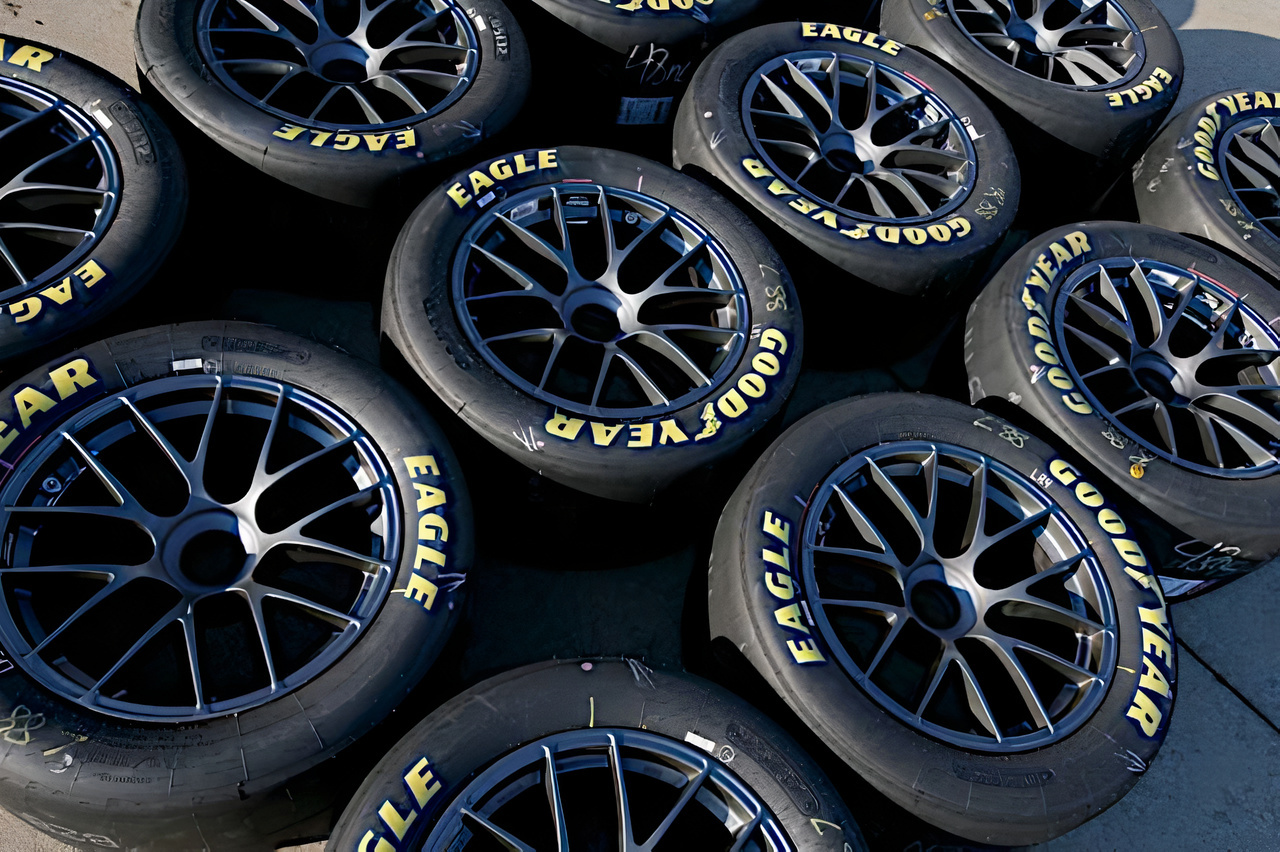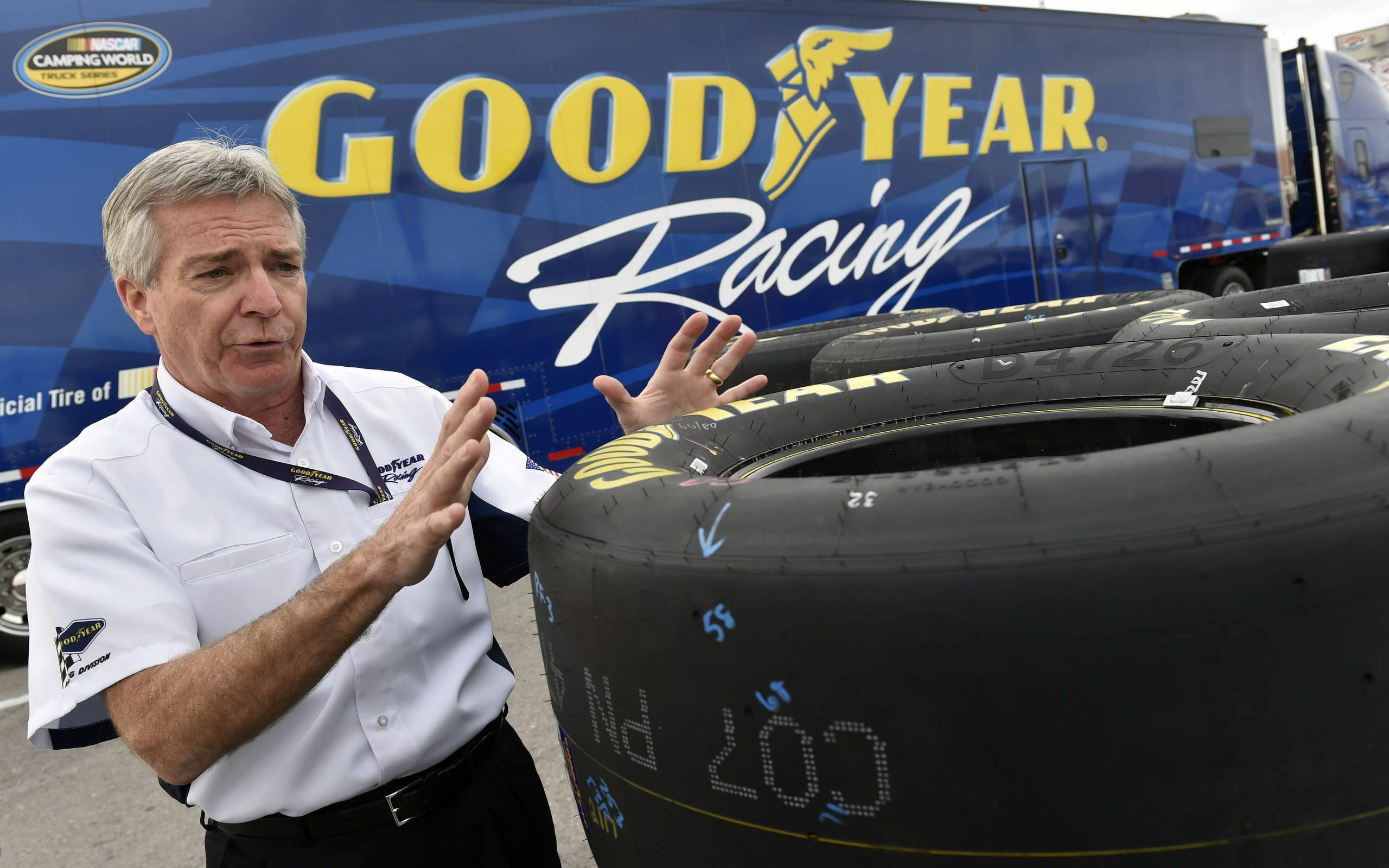NASCAR Cup Series
Cup Stars React to New Atlanta Layout
Mar 21, 2022
Racing America 24/7 Channel
On three different occasions during the Folds of Honor QuikTrip 500, a driver leading at the newly reconfigured Atlanta Motor Speedway suffered a right rear failure in front of the field to trigger some type of incident and Goodyear intends to find out why.
The first involved Ross Chastain on Lap 95. The Trackhouse Racing No. 1 suffered only marginal damage and was able recover from two laps down to finish second. Tyler Reddick spun his Richard Childress Racing No. 8 in front of the field on Lap 145 and collected 12 other drivers in the resulting melee. Ricky Stenhouse Jr. spun his JTG Daugherty No. 47 on Lap 202 and collected four other drivers.
A shared attribute between all three is that each drove a Chevrolet and that made Goodyear Racing Director Greg Stucker immediately ‘suspicious’ of their set-ups. The official tire supplier of the sanctioning body took the right rears back to its Akron, Ohio headquarters for a thorough analysis.

"They are all the same manufacturer; we do know that and that’s a little bit suspicious," Stucker said. "The fact that it’s the right rear is kind of unique and strange because the right rear is not the most heavily loaded position on the race car. That’s the right front.
"So, we’re trying to understand what’s going on. We didn’t see anything at all in practice. We had guys put 50 plus laps on tires in practice, and we saw nothing at all, no indication of anyone having any sort of issue whatsoever.
"We’re collecting those tires, and we’ll get them back to Akron, and we’ll have a better ability to have a look at them to see if we can find anything and work with the teams to try to understand where they were with suspension, air pressure – always a factor to consider – because the tires all failed in the same fashion. They were all an overloaded, over-deflected type of failure. That could be even if the tire was cut and going down. We haven’t found evidence of that in any of them yet, and that’ll be one of the things we continue to look at."

At various points throughout the race, drivers leading the race felt like they were extremely loose and not able to wholly feel their right rears. With that said, Stucker also said other tires pulled from cars during the race indicated minimal tire wear on one of its hardest compounds.
For the race on Sunday, Goodyear recommended a minimum psi of 20 in the left front, 22 psi in the left rear, 52 psi in the right front, and 50 psi in the right rear. Stucker also said they reminded teams of those recommendations throughout the race.
Stucker said drivers were provided very little notice before the tire lost pressure.
"You could see, with Ricky, that his tire was going down briefly before he spun," Stucker said. "We're just trying to understand anything those guys might have told the team that would help us or helps the team figure out what’s going on."
Chastain said it made him uneasy the rest of the race.
"I was asking Phil (Surgen), my crew chief, and I wasn't sure if I should go easy on my right rear and he didn't feel that was the case, so we went hard when we needed to," Chastain said. "It's not a great feeling. I feel like I had a grenade in my hand and the pin was pulled. I don't have the smoothest of hands, so I was afraid I was going to lose it again.
"I really had no idea if I would blow another tire. It wasn't a good feeling and hopefully Goodyear gives us some answers. Hopefully we can have some healthy dialogue there, and if it was our fault, we have to go to work and we'll take that at Chevrolet, or I will."

William Byron won the race after leading 61 of the final 64 laps but said he wasn’t that concerned at the end -- nor did he believe this was a Chevrolet issue.
"I think it was just the fact that whoever was leading for a long time when it got single file," Byron said. "Just the way that the cars felt on corner entry, you put a lot of load into the right-side tires a lot of time in the back traffic, you put a lot of load into the front, and that's usually what you find on a repave is right front tire issues.
"I think Goodyear has done a good job of working through and making sure that the right front does last, but the right rear is a little bit of an unpredictable thing because typically you're not on the right rear that hard on a repave because you can't be loose.
"It was unique that that was an issue, but I'm sure it's just something new with the track and something we'll work through."
His crew chief, Rudy Fugle, was concerned and offered some insight as to why the leader might have damaged their right rear.
"The speed and having to run pretty much wide open to lead compared to 70 percent throttle for a full lap to be second or third is definitely putting a lot more stress on the tires," Fugle said.
"I was trying to coach William into doing some lifts and just if we could lift a little bit and slow the pace down a little bit and not get passed, then we could save the tires. Definitely at a repave you are always worried about tires. You got hard tires because you have so much load, but eventually you put enough heat in them, and they blow out. Definitely on our mind.
"We kind of knew because we share information. We kind of knew where some of these guys were and thought we may be -- we weren't in worse shape at least than they were. Just trying to manage it."